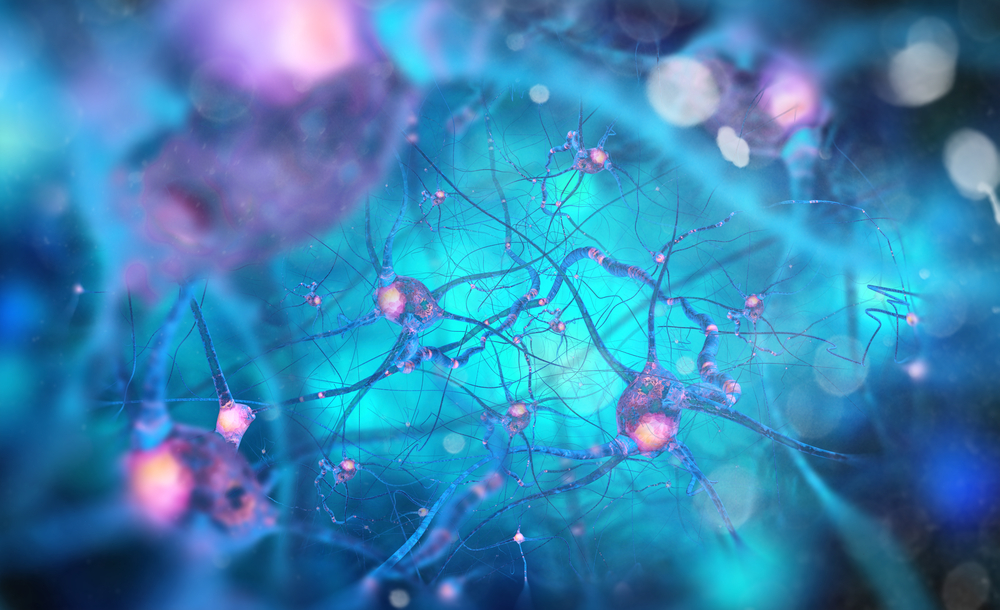Rare Case of FUS, Tau Coexistence in Sporadic ALS Suggests Potential Biological Interaction

Tau and FUS proteins may contribute to a cellular process common to both amyotrophic lateral sclerosis (ALS) and dementia, a rare case suggests.
The case was reported in a study, “Combined FUS+ Basophilic Inclusion Body Disease and Atypical Tauopathy Presenting with an ALS/MND‐plus Phenotype,” published in the journal Neuropathology and Applied Neurobiology.
Also known as motor neuron disease (MND), ALS is a progressive disease triggered by the abnormal accumulation of toxic protein clumps in nerve cells that control motor function (motor neurons).
Misfolding of FUS, tau, or TDP-43 proteins are common events linked to ALS development. They are often mutually exclusive events, and it is possible to identify the specific altered ALS-causing protein in each patient.
These proteins have also been associated with the development of frontotemporal dementia (FTD). In particular, the FUS protein has been reported to be involved in the development of three forms of clinical dementia: atypical FTD with ubiquitinated inclusions, basophilic inclusion body disease, and neuronal intermediate filament inclusion disease.
Despite the fact that these different clinical entities share some cellular and biochemical features, it remains unclear if ALS and frontotemporal dementia belong to the same disease spectrum.
A team led by researchers at the University of Sheffield in the U.K. are now reporting a rare case of a patient who had ALS with features associated with both FUS-linked disorder and atypical tauopathy (tau-related disease).
The 43-year-old man went to the hospital with coordination problems predominantly affecting his right hand that had persisted for one year. This symptom was associated with mild weakness and episodic tingling (paresthesia) affecting the right hand and forearm, and with mildly reduced sensation.
He had a family history of neurological disease, with his mother being diagnosed with Alzheimer’s disease at 75 years old. No other family member had a history of neurological disease.
Over the next two years, he experienced increasing difficulty using his hands. Standard clinical assessment of his brain and cervical spine did not reveal alterations. However, detailed brain scans showed that he had reduced blood pressure in different spots in the brain and decreased uptake of dopamine (an important signaling protein of the brain).
At this point, he started treatment with baclofen and levodopa, but no significant benefit was noted.
Two years after the initial assessment, his right upper limb symptoms had progressed, and he had also developed impaired walking balance causing stumbling and falls.
He reported widespread muscle twitching, and episodic, short-lived sharp pains in his arms and legs. He also complained of some cognitive slowing, which was not confirmed upon clinical evaluation.
He had developed severe weakness of the right arm and milder changes affecting the left arm, while his legs were normal in tone and power.
In the following year, he developed dramatic mirror movements. He was treated with Requip (ropinirole), but again with no discernible benefit.
The progressive strength deterioration of the upper and lower limbs continued, spasticity (uncontrolled muscle contraction) became a problem, and his speech became slurred. He also started to show slowness of movement, loss of coordination with impaired perception of his own movements, and he described himself at times as unaware of his body position. He had difficulty with sequencing of actions and became emotionally labile, which refers to rapid and often exaggerated changes in mood. He also developed urinary frequency and urgency.
He had to start noninvasive ventilation support due to a reduction in respiratory capacity and symptomatic accumulation of carbon dioxide (hypercapnia). A new trial of dopamine therapy was again started but unsuccessfully.
Despite the efforts made to help resolve his progressive clinical manifestations, he died 11 years after symptom onset.
Post-mortem examination revealed he did not have genetic mutations in ALS- and dementia-related genes, including FUS, MAPT, and C9ORF72.
Analysis of brain biopsies revealed he had accumulation of both the FUS and tau proteins. This occurrence is uncommon to begin with, but the researchers further found that some brain cells were positive for both types of proteins at the same time.
“The coexistence of two such rare [neurological disease-associated patterns] raises the question of a pathogenic interaction,” the researchers wrote.
Although these findings do not provide proof of the relationship of the two proteins, the team believes that the FUS protein may trigger the progression of Tau-derived features. Additional “cell biological studies and detailed studies of tau RNA and protein may be warranted in FUS-pathology cases” to further explore this event, they said.






